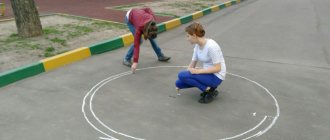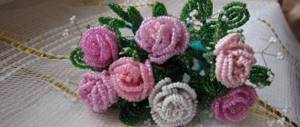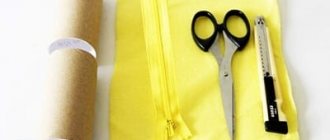When giving gifts, people often rack their brains about what to give. It happens that people choose a watch as a gift, but the store options, despite all the variety, are still standardized things, and sometimes you want a twist. I would like to give a gift with an invention, a unique gift.
And here a watch made of epoxy resin comes in handy for this. Of course, to give such a gift, you have to try hard. As they say, it takes a lot of work, but the undertaking is worth it. You can make this thing not only as a gift, but just like that, for yourself, as a useful, necessary thing.
When creating this craft, a wooden cut plate with a void in the middle is taken as a basis. The void must be neat in appearance so that the clock made later will have the desired alignment. Everything needs to be planned in advance, before the thing is done. A watch made of wood and epoxy resin inside can have different fillings:
- coffee beans;
- pebbles;
- flowers;
- other jewelry items.
The filling inside the volume of the craft is done during the work process when forming the epoxy layer. All work on producing a beautiful thing includes several stages. The result will be an exclusive wall clock. It is advisable to have the necessary tools for the job.
What will you have to work with?
When creating crafts, you will need the following tools:
- a circular saw;
- Sander;
- cutter;
- clamps;
- compass;
- drill.
It is not necessary to use a circular saw if you are making a square clock that is sewn together from slats. There are also such crafts, then the slats are carefully connected with screws, and the internal space of the watch is filled with epoxy in the same technological process as in exclusive round watches.
Materials required for work:
- tree;
- epoxy adhesive;
- additional components.
Additional components when creating things with your own hands, in addition to hardener and dyes, include plasticine and cling film.
Useful to know > How a cutting board is made with epoxy resin, operation algorithm
Required materials and tools
To create resin products, you will need:
- Two components of the mixture: epoxy and hardener (sold as a set).
- Measuring spoons or special scales to control the volume of each component.
- Wooden stirring sticks.
- Container for dilution. Disposable tableware will do.
- Form.
- Drill for making a hole.
- Sandstone or sandpaper No. 400 - 2,000.
Additionally you may need:
- Epoxy resin paint and toothpicks for adding it to the mixture.
- Decorations: pieces of decorative wood, small flowers, etc.
- Tweezers for distributing jewelry.
Round cutting
When creating a round craft from a cut wooden plate, you must first saw down the plate. This is done with a circular saw, this is the most convenient option. For a selected piece of log of not too large diameter, the side surface of the cut is carefully cut off with a circular saw. Then, having accurately measured the thickness of the future craft, the required round piece is cut off. Next we figure out how to remove the core so that it looks beautiful and the alignment is maintained.
The best option: drill holes in the circle around the perimeter along the circle outlined inside. Then, using chisels of different shapes, carefully gouge out and connect the holes in one line. If everything is done carefully, the center of the piece of wood will fall out, and the alignment will not be disturbed, since everything was marked in advance with a compass and pencil. You just need to do this carefully so that the craft remains safe and sound during all these actions.
Cost of education:
| Course name | price | duration |
| Basic course | 3000 RUR | 1 day |
| Volumetric fills | 5000 RUR | 2 days |
| Filling into frames | 5000 RUR | 2 days |
| Course combination options and costs |
| Base + volume/frames 6500 rub. |
| Volume + frames 7000 rub. |
| Base + volume + frames 9000 rub. |
The permanent “bring a friend” promotion allows you to save 10% of the course cost.
Examples of works by Anastasia Benenson
Preparing for pouring
When the wooden round with a voluminous hole inside is ready, proceed to the next stage, you need to prepare it for pouring. For this, a small massive board is selected for ease of use. The round blank must be attached to this board on one side. To do this, on the side where the round piece is attached, a plasticine ring is laid out along its edge.
When laying this device, do not forget to place cling film between the piece of wood and the plasticine. This is necessary so that the epoxy glue, which will subsequently be poured, does not leak at the bottom of the fill. After this part of the work, you should use clamps to firmly secure what is being prepared for pouring. You will get a depression that can be filled with the mixture. To avoid unnecessary inclusions of glue in the wood at the top of the pour, you need to place a plasticine safety ring along the edge of the top.
Storage and care of products
Things coated with this resin cannot be treated with alcohol or various solvents, as this damages the beautiful surface of the product.
Epoxy material reacts negatively to a variety of chemicals, so they should not be stored next to household chemicals.
Such jewelry is worn after applying cosmetics and using perfumes and various deodorants.
Under no circumstances should it be treated with acetone. If you are doing a manicure and have an epoxy ring on your finger, then the ring must be removed before starting. Manicure products are volatile and at such a distance they can damage the product.
It is also necessary to remove jewelry before going to bed and before sports exercises.
In no case should you fasten brooches before putting on things, as the pin may come unfastened.
The hardened solution is very durable, but if handled carelessly it can lose its beautiful appearance.
Such products must be stored in boxes covered with soft material, and they should not be left for a long time in the open rays of the sun.
Pouring process
It is better to do the filling in two stages. First to the middle, then again, to the top of the cut. When pouring, you will immediately get unnecessary effects: bubbles, swelling. To avoid spoiling the item, it is better to pour it in several passes. Moreover, when interspersing coffee beans and other similar decorations, when creating visual abstraction, it is more convenient to do just that. After all, it is logical to first pour one layer, then embed the necessary objects into the glue at the required depth, and then continue pouring.
Useful to know > Homemade epoxy resin lamp, manufacturing features
Epoxy glue can be purchased in different qualities and additives for filling. Each package has instructions for mixing the proportions of adhesive, hardener and additives. For all types of glue, the price does not vary too much; they are available to the mass consumer. Based on what a person needs, he chooses the optimal solution mode. It is advisable to choose a dark color dye so that the clock mechanism, which will subsequently be inserted into the craft, is not very visible.
Thick brown color is perfect for this design. The mixture must be thoroughly stirred. This should be done slowly, slowly, so that the mixture is well mixed, after which the first pour is made. Filling does not have to be done in two stages; it can be done in one go. It all depends on the thickness of the craft and the internal contents and inclusions that will be inserted. They can be at different depths. You need to do as many fills as necessary to create a beautiful thing. Moreover, inserted objects for beauty and design can be placed so that they illuminate the entire product. For example, mother-of-pearl shells from deep resin can give such an effect.
After the first pour, you need to wait until the resin hardens. Before the end of hardening, it’s time to embed, secure coffee beans or other decorations along the edges of the recess. The center must be left clean to install the clock mechanism. Next, a new portion of the mixture is prepared and carefully poured again. If the pouring is done in two passes, then the second time it is poured to the top, after which the workpiece dries and finally hardens.
Tips for choosing epoxy resin design and coloring
For creative work, it is better to use jewelry epoxy - when working, this mixture is absolutely transparent and allows you to paint the product in any desired color. Exclusive watches can be given any desired color if desired, using a rich palette of tinting paints.
You can make beautiful shimmers, give the product a shining effect, and even make a watch that glows in the dark by adding a fluorescent pigment to the resin. It is better to paint epoxy separately. To do this, the resin is pre-poured into separate cups.
Advice. Pigments intended for coloring epoxy resins are very economical. The maximum permissible amount of dye should not exceed 5% of the total mass of the resin.
You can use absolutely any thing as additional design elements. For example, coins, coffee beans, seeds, glitter, dried flowers, pebbles and even insects. It all depends on the features of the intended design.
Further processing
When the workpiece has hardened, the clamps are removed, the film is removed from the back side and the plasticine is removed from both sides. Cleaning and polishing is carried out. It is better to grind with a grinding machine, it is easier and faster. After grinding, the planes on both sides are polished and sanded. First medium, then smaller, up to zero inclusive.
Useful to know > What countertops are made from epoxy resin and why they are good
Next, you need to make a recess on the reverse side for the clock mechanism. First of all, the center of the product is located; this center is drilled through the hardened glue. The axis of the clock mechanism is inserted into the center of the craft and its outline is outlined. Then, having removed the device, use a tool with a cutter attachment to cut out the outlined square. The work should be done in such a way that the centering of the product is maintained, so that later the hanging clock is located directly on the wall.
Master class on making cup holders from epoxy resin
Unusual, elegant and unique cup holders made of epoxy will become the real pride of any housewife. They fit perfectly into any interior, combining different shades. During the work process, you can place any small objects in the resin: buttons, pebbles, coins, sparkles, grass, etc., in accordance with the style of the premises. By the way, you can not only decorate your own kitchen with original products, but also give them as a gift for any event.
Epoxy resin helps make beautiful interior items
What you need for work
Before studying the master class and engaging in exciting creativity, prepare everything you need. To work you will need the following:
- epoxy resin in the required quantity and hardener for it;
- working stands (wooden cuts up to 15–20 cm in diameter);
- coloring pigments (transparent and opaque can be used);
- plastic container;
- plastic dishes according to the width of the desired cup holders;
- disposable cups (if you plan to paint the resin in different colors);
- wooden spatulas;
- personal protective equipment: glasses and gloves;
- burner (when preparing epoxy, it must be heated).
The workplace is also prepared in advance. Cover the table and floor with polyethylene. Also make sure that all work will be done in a well-ventilated room. And don't forget to wear glasses and gloves.
Making cup holders: step-by-step instructions
Knowing the entire sequence of work, even a novice master can cope with this task. Epoxy cup holders are made according to certain steps, you need:
- Prepare epoxy in a container (mix resin and hardener in the proportion indicated on the instructions).
- Using a spatula, mix the substance thoroughly for 4–5 minutes until a homogeneous and thick consistency is obtained.
- Pour resin into cups and add the desired dye (colors can be mixed and get different shades and beautiful stains).
- Then add the desired filler to the epoxy.
- Place the dishes for making glass holders on a small hill and pour resin there.
- In the process, you can tilt the container and achieve original stains. You can also mix colors using wooden sticks.
- To remove air and speed up the curing process, use a gas torch. With the device turned on, quickly move it near the surface (at a distance of 8–10 cm). All air bubbles will rise to the edge and burst. But do not overheat the resin and do not allow the mass to boil and form foam.
- After 15–20 minutes, when the mixture has dried a little, carefully remove the excess from the bottom of the stands.
You should prepare everything you need for work in advance
After all procedures, leave the products to dry for 1–1.5 days. Pre-cover them from dirt and dust. For example, place a cardboard box or crate on top. And after complete drying, you can already admire your magical works.
Assembling the craft
After the mechanism is inserted into the back of the product, you need to mark the places of the numbers where the time is shown. To do this, first markings are made, then small holes are pierced with an awl in those places where the numbers will later be inserted. The final step is to attach the hands to the watch mechanism. When everything is ready, all that remains is to hang the clock on the wall. This is an unusual but useful design; it will be especially good as a gift to friends and family.
Having made one product, another, a third, over time you can learn how to create a wide variety of watches from epoxy resin with different designs, so that you can give others a master class on how to make them. Over time, the field for creativity will expand, and it will be possible to find new materials to decorate the external surroundings of watches.
Exclusive watches made of epoxy: we make it ourselves
When the holidays approach, the pressing question arises regarding the choice of gifts. The optimal and universal solution is a hand-made epoxy watch. This product will decorate your own apartment, adding a unique flavor.
Epoxy resin clocks will decorate any interior
What you need
Before you start studying the recommendations and step-by-step instructions, you should first prepare everything you need for the job. To make your own epoxy resin watch, you will need the following:
- a blank mold for the future product (can be made from MDF or a piece of plywood);
- finished clock mechanism;
- epoxy resin with hardener and epoxy primer;
- auxiliary tools: disposable plastic cups, wooden spatulas for mixing the mass, brushes, masking tape and napkins;
- personal protective equipment: gloves, goggles and mask;
- construction tools: gas burner and level;
- dyes and pigments for design.
Preparing the round mold
A master class on creating exclusive watches begins with preparing the shape of the future product. Using a circular saw, the selected piece is carefully cut off with a specified diameter and size for the future base. A small hole should also be cut in the central part of the workpiece. The clock mechanism will be inserted there. After finishing the work, the wood is sanded and all gaps are removed.
Fill
When the wooden round is ready, the second stage begins. Preparing the workpiece for pouring with epoxy. To do this, use the following instructions:
- A small but massive board is selected.
- The workpiece is attached on one side to the board. To do this, regular plasticine is carefully laid out on the mounting side of the round along its edges.
- First, before joining the parts, cling film is placed on the plasticine. This is necessary so that the resin does not leak when pouring.
- After all the work on the round piece, a depression is obtained. It will be filled with the mixture.
When making a watch you will need a product blank
Advice. It is better to fill with epoxy in two approaches. The first layer is poured to the middle, the second covers the recess completely.
This recommendation is relevant and important. Firstly, the two-layer coating of the product allows you to obtain an airy design, especially if additional design additions are used: twigs, flowers, coffee beans, sparkles, rhinestones, etc. And secondly, it helps to eliminate all the flaws that become visible during the first pour. Correct dilution of the resin with the supplied hardener becomes mandatory.
According to the classical scheme, the masses are diluted in a ratio of 10x1, where 1 part is allocated to the hardener. But first read the instructions included with the package. Stir the mixture very thoroughly so that the hardener penetrates the entire depth of the resin container. After the first layer of fill, you need to give it time to completely harden, and then proceed to the second.
You don't have to limit yourself to just two fill layers. If a complex, multi-stage design is planned, resin can be poured three or more times. But the subsequent filling must be done after the previous layer has completely hardened. The usual thickening time for the resinous substance is 1–1.5 days.
Post-processing
After the last layer of resin has completely hardened, you need to remove the protective cling film. Then the future watches are polished. For these purposes it is better to use a grinding machine. After the grinding process, additional polishing of the product is carried out, the processing ends with cleaning with fine-grained sandpaper.
After all the work, a recess is made under the clock mechanism (on the back side of the workpiece). Carefully drill a hole in the central part of the fill. The axis of the mechanism is first inserted into the center and its full contour is outlined. After which a square is cut out according to the markings. When working, pay attention to the alignment so that future watches do not become “skewed.”
Final assembly of the product
Once the clock mechanism is inserted, you need to attach the hour numerals. A marking is made first, then holes are pierced with a sharp awl in the places where the dial is marked. For strength, each inserted number can be glued with epoxy glue. The final step is to install the arrows. Our exclusive watches are ready - all you have to do is hang them on the wall and enjoy the beautiful addition to your interior.
When working with resin, precautions must be taken
What is epoxy resin, properties
Epoxy is a synthetic oligomer containing epoxy groups. According to the production method, it is very complex; it is a condensation product of bisphenol A and epichlorohydrin. The material cannot be used in its original form: its condition can only be stabilized by the introduction of a hardener, after which the polymerization reaction will begin.
The composition of epoxies of different brands may also include other components - chalk, cement, alabaster, which compact the mass. The resin also goes well with aerosil, wood chips, graphite, various dyes, and aluminum powder. Various oils and other substances are also added to the composition depending on the needs of the users.
For pouring wood and other creative activities, transparent resin without fillers, which contains plasticizers and modifiers, is perfect. The material has the following properties:
- resistance to abrasives and mechanical damage;
- low wear rate;
- low moisture permeability;
- no shrinkage during operation;
- lack of reaction to the action of chemicals, with the exception of strong acids;
- excellent adhesion to wood, plastic, metal substrates, glass, ceramics, rubber and leather.
Application of material
The uses of resin are varied. It finds application in most large industrial sectors:
- electronics;
- aviation;
- machine production;
- equipment repair;
- shipbuilding;
- construction;
- fiberglass production;
- pouring floors;
- production of glue, putty, grout;
- production of paints and varnishes.
You can also work with epoxy at home. It is ideal for the manufacture and processing of furniture made of natural wood and its derivatives, slab. Using pouring, you can make an original stool, chair or table, or doors for a cabinet. Souvenirs, jewelry, watches, figurines, cutting boards and items for the kitchen, bathroom, vases, tambourines and other toys for children also turn out beautiful.
Different types and states of glue
There are different brands of epoxy resin on sale - domestic and imported. Most of them are suitable for making furniture
It is only important to decide whether colored or transparent resin is needed for decoration. Usually, in order to see beautiful cuts of wood and its fibers, transparent compounds are purchased. For example, high-quality resin YD-128 - colorless and transparent, like glass
Epoxy MG-Epox-Strong also has no complaints about transparency, and is even suitable for creating jewelry. By the way, such resins can be combined with colored resins - making bright inclusions inside the main mass
For example, high-quality YD-128 resin is colorless and transparent, like glass. Epoxy MG-Epox-Strong also has no complaints about transparency, and is even suitable for creating jewelry. By the way, such resins can be combined with colored resins - making bright inclusions inside the main mass.
These materials are two-component adhesives. Stabilization of the liquid resin occurs by adding a hardener, which is included in the second bottle. It will not be possible to fill furniture parts into molds with thick pastes, so you should not buy them.
There are 5 main states of resin:
- liquid - this is a material without a hardener or immediately after its introduction, has excellent fluidity;
- honey-like - resembles molasses, a slightly thickened resin, which is best used for layer-by-layer pouring of crafts;
- thick - fluidity is sharply reduced, the mass flows poorly and is only suitable for gluing parts or as putty;
- rubbery - epoxy resembles rubber or hardened plasticine, sticky, but can change shape;
- solid - fully cured resin.
Differences between resin and glue
In master classes on pouring wood products, you need to use epoxy resin, but not glue based on it. Main differences between materials:
- the curing time of the glue cannot be changed, and the freezing rate of the resin can be increased or slowed down;
- the glue turns yellow, but the resin remains transparent;
- glue has low elasticity, while resin is pliable and allows the work required by the master;
- Glue is used to join parts; it will not be possible to pour it into products; almost any figures can be made from resin.









